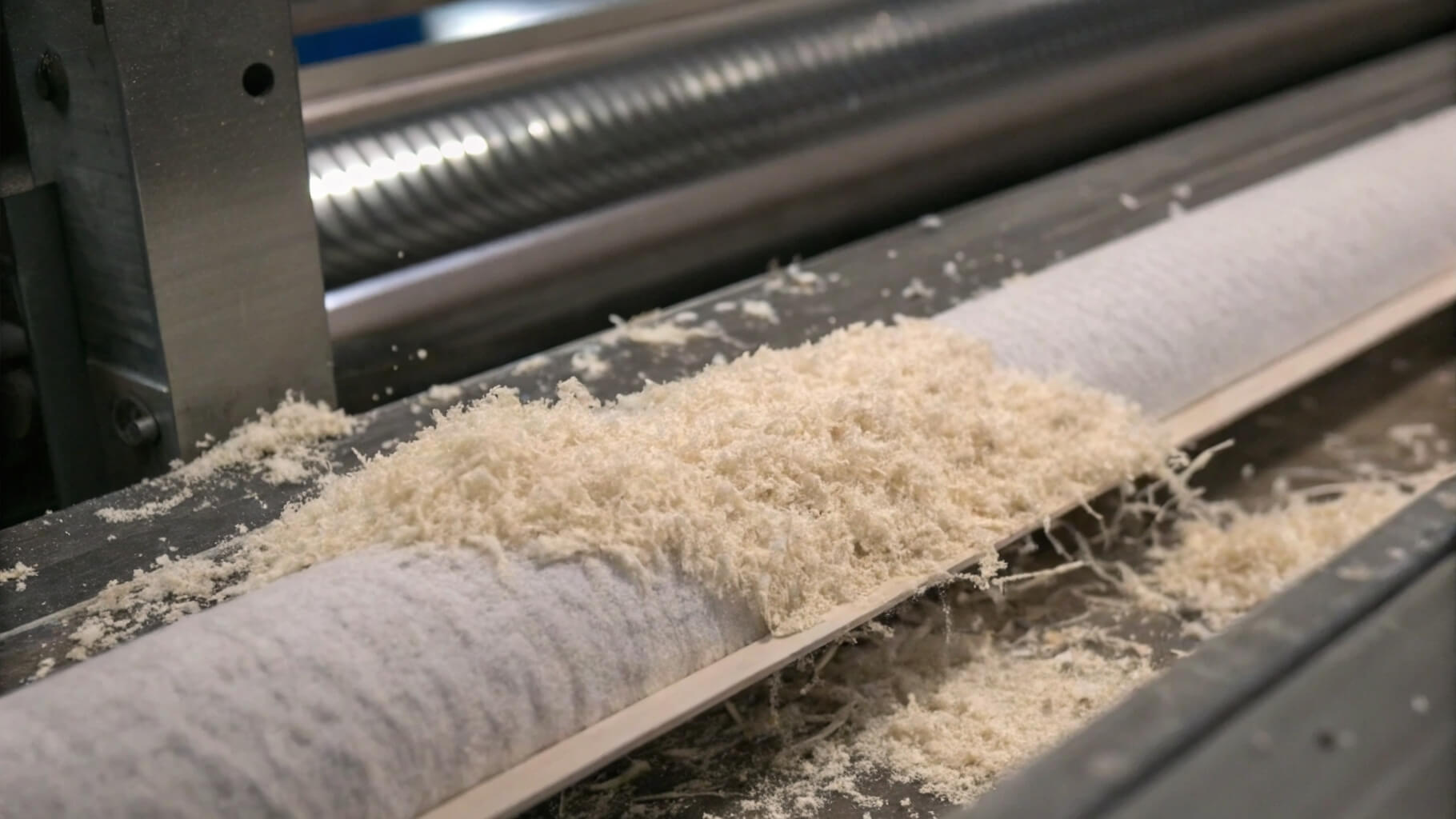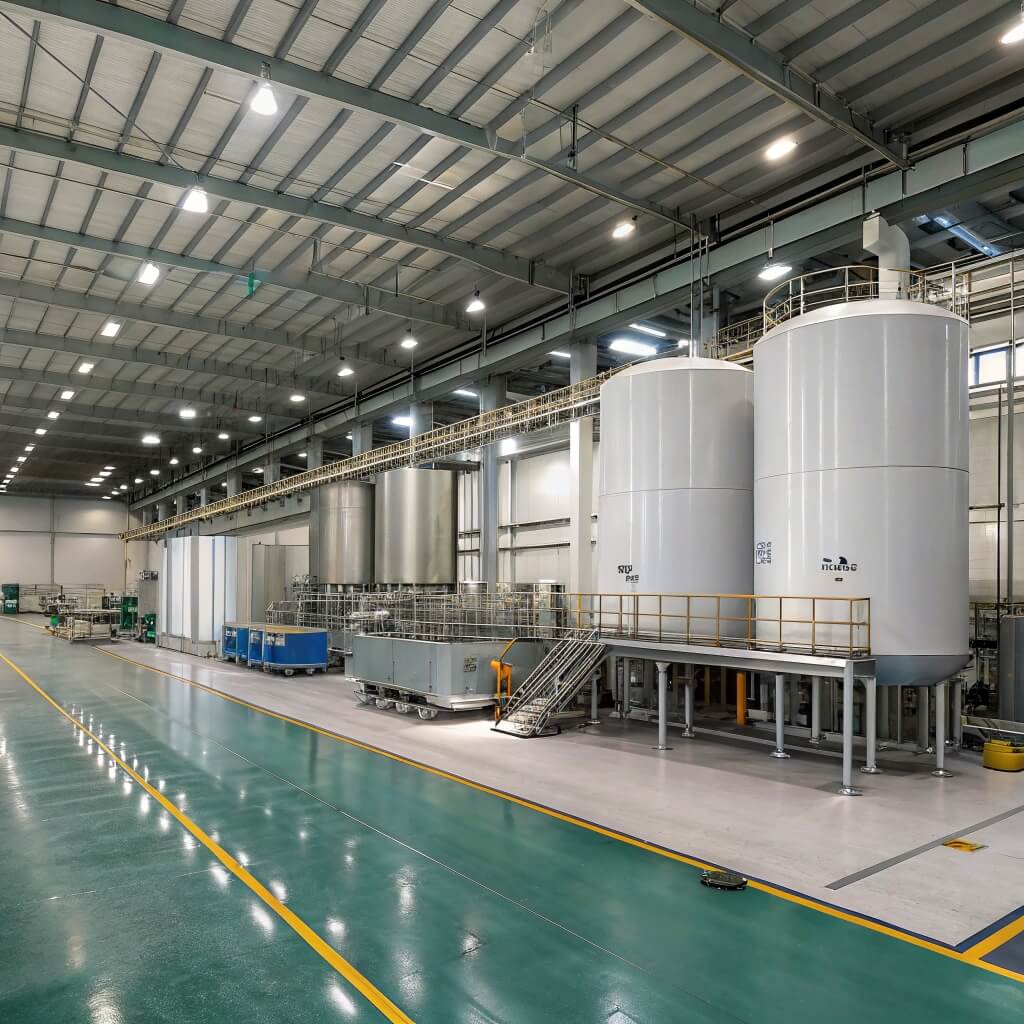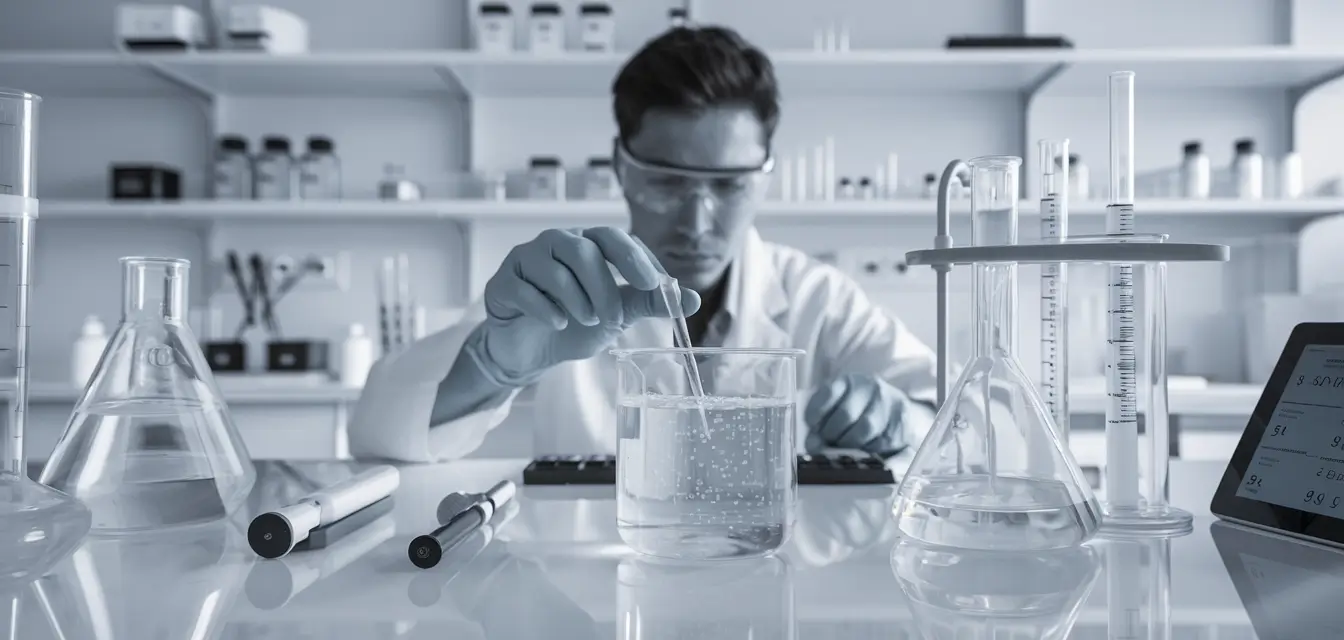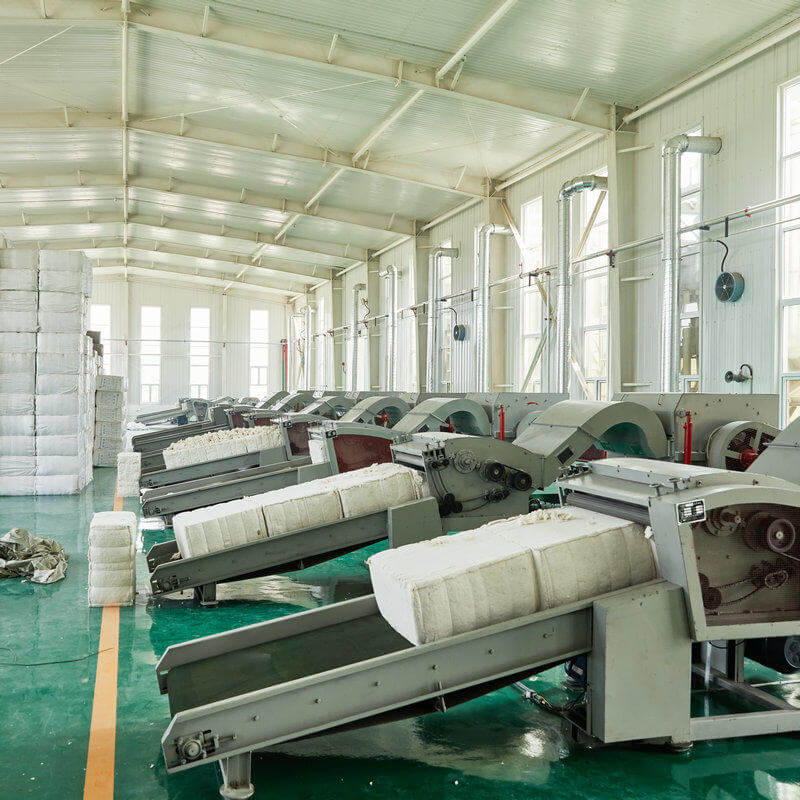Hydroxypropyl Methylcellulose (HPMC) plays a critical role in construction, pharmaceuticals, food, and cosmetics. Yet, one country has emerged as the undisputed global leader in HPMC production—China. What factors have enabled China to take control of this highly competitive industry?
China dominates the global HPMC market due to cost-effective raw materials, large-scale production, government incentives, and advanced manufacturing technology. Its strong supply chain, price competitiveness, and adherence to international quality standards make it the preferred supplier for industries worldwide.

China’s dominance in the HPMC market is driven by economies of scale, superior supply chain efficiency, and competitive pricing.
While China’s position as the leading HPMC supplier is undeniable, understanding how it achieved this status requires a closer look at its industrial expansion, competitive advantages, quality control measures, and global market trends. Let’s explore what makes China the go-to destination for HPMC procurement.
How Did China Become the World’s Leading HPMC Supplier?
China was not always the dominant force in the global HPMC industry. Two decades ago, its production capacity was relatively small, and international markets were led by manufacturers in Europe and North America. So, what changed?
China became the world’s top HPMC supplier through rapid industrial expansion, government-backed policies, strategic factory hubs, and competitive advantages over rivals like India, Germany, and Turkey. These factors have helped China secure a dominant position in both production volume and pricing.
The Rapid Expansion of the China HPMC Industry Over the Past Two Decades
China’s HPMC production has experienced exponential growth. Key developments driving this expansion include:
- Increased demand across multiple industries, particularly in construction and pharmaceuticals.
- Significant investment in production capacity, with new factories adopting advanced manufacturing techniques.
- Technological advancements that have improved product consistency and reduced production costs.
- Export-driven growth, with Chinese suppliers aggressively entering international markets.
Between 2005 and 2023, China’s HPMC production grew by over 300%, solidifying its position as the largest global supplier. Today, Chinese manufacturers supply millions of tons of HPMC annually to international buyers.
Government Policies and Incentives Driving HPMC Production in China
Government intervention has played a key role in China’s rise as an HPMC powerhouse. Supportive policies include:
- Tax incentives and subsidies for chemical manufacturers, reducing production costs.
- Environmental regulations encouraging sustainable production, making Chinese HPMC more attractive to eco-conscious buyers.
- Trade agreements that ease export restrictions, allowing manufacturers to supply HPMC globally with fewer barriers.
China’s Five-Year Industrial Plans have prioritized the growth of the chemical industry, including HPMC manufacturing, ensuring continued investment and innovation in the sector.
Key Manufacturing Hubs: Major HPMC Factory Clusters in China
China’s HPMC production is concentrated in several key provinces, where manufacturers benefit from established supply chains, skilled labor, and logistical advantages.
| Region | Key Features |
|---|---|
| Shandong | Largest HPMC production hub, with extensive exports |
| Hebei | Strong presence of chemical suppliers and manufacturers |
| Jiangsu | Advanced production technology and strict quality control |
| Henan | Rapidly expanding factories with cost-efficient production |
Shandong remains the most critical HPMC production base, accounting for a significant share of China’s total output. This region has well-developed transportation networks, allowing efficient export to global markets.
Comparison: China vs. India, Germany, and Turkey in HPMC Production
China outperforms its competitors in cost, production volume, and supply chain efficiency. Here’s how it compares to other key players in the global HPMC market:
| Country | Production Volume | Cost Efficiency | Technology Level | Market Share |
|---|---|---|---|---|
| China | Very High | Low | Advanced | Largest |
| India | Moderate | Medium | Developing | Growing |
| Germany | Low | High | Very Advanced | Niche Market |
| Turkey | Low | Medium | Developing | Limited |
- India: Increasing production but inconsistent quality and supply chain delays remain issues.
- Germany: Focuses on high-end specialty HPMC but with significantly higher costs.
- Turkey: Smaller production capacity and less competitive export pricing.
China’s ability to combine large-scale manufacturing with competitive pricing and strong logistics ensures that it remains the preferred choice for global buyers seeking cost-effective and high-quality HPMC.
What Gives China a Competitive Edge in the Global HPMC Market?
China’s ability to dominate the hydroxypropyl methylcellulose (HPMC) market is not accidental. While many countries produce HPMC, few can match China’s combination of cost-effective production, advanced manufacturing, and streamlined logistics.
China leads the global HPMC market due to abundant raw materials, high automation in factories, economies of scale, efficient supply chains, and internationally recognized certifications. These factors make Chinese HPMC the most cost-effective and widely available option for global buyers.
Abundant and Cost-Effective Raw Materials for Hydroxypropyl Methylcellulose
HPMC is derived from cellulose, a natural polymer extracted from wood pulp or cotton linters. China has a significant advantage in raw material availability due to:
- Large-scale forestry and cotton production, ensuring a steady supply of cellulose.
- Lower production costs compared to Western and Indian manufacturers.
- Efficient extraction and refining processes, reducing waste and improving material yield.
Raw material costs directly impact HPMC pricing. Compared to Germany and Japan, where cellulose costs are significantly higher, China’s ability to source affordable raw materials ensures lower production expenses.
Advanced Production Technology and High Automation in HPMC Factories
Chinese manufacturers have invested heavily in automation and production technology, allowing them to maintain high efficiency and consistency. Key advancements include:
- Automated viscosity control systems, ensuring consistent product quality.
- Closed-loop production systems, reducing contamination risks.
- Real-time quality monitoring, enhancing batch-to-batch uniformity.
These innovations allow factories to increase production capacity while minimizing costs, making Chinese HPMC more competitive in both price and quality.
Competitive HPMC Price in China: How Economies of Scale Lower Costs
China’s massive production capacity leads to significant cost advantages. Economies of scale allow manufacturers to reduce per-unit production costs through:
- High-volume production, spreading fixed costs over larger output.
- Bulk raw material procurement, securing lower prices.
- Energy-efficient processing, optimizing manufacturing expenses.
| Factor | China | Germany | India |
|---|---|---|---|
| Production Volume | Very High | Low | Moderate |
| Raw Material Cost | Low | High | Medium |
| Labor Cost | Moderate | Very High | Low |
| Automation Level | High | Very High | Low |
| Final Product Price | Lowest in the market | Highest in the market | Fluctuates |
Due to these factors, Chinese HPMC consistently offers the best balance between quality and cost, making it the preferred choice for bulk buyers.
Strong Supply Chain and Logistics Networks for Bulk HPMC Supply and Export
China has developed an efficient supply chain that supports high-volume exports[^1]. Key advantages include:
- Major seaports such as Shanghai, Tianjin, and Qingdao, ensuring efficient global shipments.
- Established logistics networks, reducing delivery lead times.
- Advanced warehousing systems, supporting large-scale inventory management.
Compared to India and Turkey, where logistical inefficiencies can cause shipping delays, China’s integrated export network ensures on-time delivery.
[^1]: Exploring the impact of high-volume exports can provide insights into economic growth and trade strategies.
Availability of ISO-Certified, GMP-Certified, and USP/EP/JP Standard HPMC
Chinese manufacturers adhere to strict international quality standards, making their HPMC suitable for global pharmaceutical, food, and industrial applications. Common certifications include:
- ISO 9001 & ISO 14001 – Quality and environmental management certifications.
- GMP (Good Manufacturing Practice) Certification – Ensures pharmaceutical-grade compliance.
- USP/EP/JP Compliance – Meets United States, European, and Japanese Pharmacopoeia standards.
- REACH, ROHS, Halal, and Kosher Certifications – Expands market access for regulated industries.
Why China’s HPMC Industry Continues to Lead
China’s combination of cost efficiency, advanced manufacturing, and strong global logistics makes it the undisputed leader in HPMC production. As international demand grows, Chinese manufacturers are well-positioned to maintain their competitive edge in both pricing and supply stability.
How Does China Ensure HPMC Quality and Industry Compliance?
For international buyers, product quality and regulatory compliance are just as important as cost. China’s HPMC manufacturers meet global quality standards through advanced testing methods, strict industry oversight, and internationally recognized certifications.
China ensures HPMC quality and compliance through rigorous testing, strict government regulations, and key certifications such as REACH, ROHS, Halal, and Kosher. Leading manufacturers follow stringent quality control measures to ensure purity, viscosity consistency, and performance stability, making Chinese HPMC suitable for pharmaceutical, food, and industrial applications.
Strict Quality Control Measures in China’s Top HPMC Manufacturers
To ensure consistent quality, leading Chinese HPMC factories follow multi-stage quality control protocols at every step of production:
- Raw Material Inspection – Only high-purity cellulose sources are used to maintain quality.
- Batch Consistency Testing – Each production batch undergoes strict viscosity and solubility checks.
- Final Product Verification – HPMC is tested for purity, moisture content, and performance metrics before shipment.
Most top-tier manufacturers follow GMP (Good Manufacturing Practices) to prevent contamination and ensure product uniformity, making their HPMC suitable for pharmaceutical and food-grade applications.
HPMC Testing Methods: Purity Levels, Viscosity Consistency, and Performance Checks
Chinese HPMC factories use advanced analytical methods to ensure high product quality. Standard tests include:
| Testing Parameter | Purpose | Common Method Used |
|---|---|---|
| Purity Levels | Ensures no chemical contamination | High-Performance Liquid Chromatography (HPLC) |
| Viscosity Consistency | Ensures uniform application performance | Brookfield Viscometer Measurement |
| Moisture Content | Prevents degradation during storage | Karl Fischer Titration |
| Gel Temperature | Ensures thermal stability in formulations | Differential Scanning Calorimetry (DSC) |
| Particle Size Distribution | Affects solubility and functionality | Laser Diffraction Analysis |
These strict testing protocols ensure that Chinese HPMC meets global application requirements, from construction and coatings to pharmaceuticals and food production.
Key Certifications: REACH Compliance, ROHS Certification, Halal, and Kosher HPMC
To access international markets, Chinese HPMC manufacturers comply with various regulatory certifications, including:
- REACH Compliance (EU) – Ensures chemical safety standards for imports into Europe.
- ROHS Certification – Guarantees that HPMC does not contain hazardous substances.
- Halal & Kosher Certifications – Required for food and pharmaceutical-grade HPMC in specific markets.
- USP/EP/JP Compliance – Meets United States, European, and Japanese Pharmacopoeia standards.
These certifications expand market accessibility, allowing Chinese HPMC to be used globally in regulated industries.
Government Oversight and China HPMC Export Regulations to Maintain Global Standards
The Chinese government enforces strict compliance with export regulations and quality control through key regulatory bodies:
- China National Food and Drug Administration (CFDA) – Ensures pharmaceutical-grade HPMC meets safety requirements.
- Ministry of Industry and Information Technology (MIIT) – Regulates the chemical sector and production standards.
- General Administration of Customs (GACC) – Oversees export procedures to ensure compliance with destination country requirements.
These government agencies monitor manufacturers, ensuring that HPMC products meet international safety and quality benchmarks.
Why China’s Best HPMC Manufacturers Lead in Pharmaceutical and Food-Grade Production
China is a leading global supplier of pharmaceutical and food-grade HPMC due to strict manufacturing standards, advanced production facilities, and globally accepted certifications. The best Chinese manufacturers:
- Operate GMP-certified production facilities, ensuring pharmaceutical safety.
- Follow USP, EP, and JP guidelines for medical and food applications.
- Work with third-party testing labs for independent quality verification.
Global buyers rely on China’s top-tier HPMC manufacturers for consistent quality, cost-effectiveness, and full regulatory compliance.
What Are the Global Market Trends Driving China’s HPMC Industry?
The global HPMC market is expanding rapidly, with increasing demand across multiple industries. As companies seek cost-effective, high-purity, and sustainable solutions, China’s HPMC suppliers are capitalizing on new opportunities to strengthen their global presence.
China’s HPMC industry is driven by rising demand in construction, pharmaceuticals, food, and cosmetics, alongside international trade agreements and a shift towards sustainable production. Emerging markets further accelerate China’s expansion, reinforcing its global supply leadership.
Growing Demand for HPMC in Construction, Pharmaceuticals, Food, and Cosmetics
HPMC is a versatile, multi-industry additive, with demand surging across key sectors:
- Construction – Used in tile adhesives, cement-based mortars, and self-leveling compounds for improved water retention and workability.
- Pharmaceuticals – Functions as a tablet binder, film-coating agent, and controlled-release excipient.
- Food Industry – Works as a thickener, emulsifier, and stabilizer in dairy alternatives, processed foods, and gluten-free formulations.
- Cosmetics & Personal Care – Improves texture, viscosity, and moisture retention in shampoos, lotions, and creams.
The construction industry remains the largest HPMC consumer, while pharmaceutical and food applications are experiencing the fastest growth, driven by health-conscious consumer preferences.
How China Meets the Increasing Need for High-Purity and Low-Cost HPMC
China’s high production capacity and cost-efficient manufacturing allow it to supply large volumes of high-quality HPMC. Key factors contributing to this advantage include:
- Advanced purification technologies, ensuring pharmaceutical and food-grade purity.
- Economies of scale, lowering per-unit costs for bulk production.
- Diverse product grades, catering to different industry specifications.
With its ability to deliver both high-purity and cost-effective HPMC, China remains the preferred supplier for global buyers.
The Impact of International Trade Agreements on China’s HPMC Exports
Trade policies play a crucial role in China’s HPMC export market. Several factors influence global distribution:
- Bilateral and regional trade agreements reducing tariffs, improving market access.
- Government-backed export incentives, boosting Chinese manufacturers’ global competitiveness.
- Alignment with international regulatory standards (USP, EP, JP, GMP), ensuring seamless entry into pharmaceutical and food markets.
By leveraging favorable trade policies, Chinese HPMC suppliers gain easier access to high-demand markets.
The Shift Towards Sustainable and Eco-Friendly HPMC Production in China
Environmental concerns are pushing manufacturers toward greener production methods. Chinese HPMC producers are investing in:
- Energy-efficient processing technologies, reducing carbon emissions.
- Sustainable raw material sourcing, using certified cellulose from renewable sources.
- Water recycling and waste management systems, minimizing environmental impact.
Many top HPMC manufacturers are adopting eco-certifications, making them more competitive in sustainability-conscious markets.
Emerging Markets: How China’s HPMC Suppliers Are Expanding Globally
As demand surges in developing economies, China is expanding its export network to new regions:
| Emerging Market | Growth Drivers |
|---|---|
| Southeast Asia | Expanding construction and food processing sectors |
| Middle East | High demand for pharmaceutical and construction-grade HPMC |
| Africa | Infrastructure projects and rising pharmaceutical needs |
| South America | Growing adoption of HPMC in adhesives and coatings |
With established supply chains and competitive pricing, Chinese suppliers are gaining market share in these emerging economies.
The Future of China’s HPMC Industry
China’s HPMC market dominance is expected to continue as industries demand cost-effective, high-quality, and sustainable solutions. Expanding global trade, a focus on green production, and emerging market penetration ensure that China remains the driving force behind the industry’s growth.
What Should Buyers Know When Importing HPMC from China?
Importing hydroxypropyl methylcellulose (HPMC) from China offers significant cost and supply advantages, but buyers must understand key procurement factors to ensure a smooth and reliable transaction.
When sourcing HPMC from China, buyers must focus on supplier reliability, bulk order logistics, pricing strategies, and regulatory challenges. Proper due diligence helps in securing long-term partnerships with reputable manufacturers while avoiding common pitfalls.
How to Identify the Most Reliable HPMC Suppliers in China
Choosing a trustworthy supplier is crucial for ensuring consistent quality and reliable delivery. Buyers should evaluate suppliers based on:
- Certifications & Compliance – Verify ISO, GMP, USP, EP, and REACH certifications.
- Production Capacity – Ensure the manufacturer can consistently meet demand.
- Quality Control – Check if the supplier provides batch-to-batch testing and third-party verification.
- Customer References – Review feedback from existing buyers to assess supplier reliability.
- Factory Audits – Whenever possible, visit or request a virtual inspection.
Top-tier suppliers typically offer transparency in pricing, quality reports, and logistics, making them ideal partners for bulk procurement.
Navigating Bulk HPMC Supply: MOQ, Lead Time, and Shipment Logistics
Understanding minimum order quantity (MOQ), lead times, and shipping logistics is key to effective planning.
| Factor | Typical Range | Key Considerations |
|---|---|---|
| MOQ | 5–10 metric tons | Bulk pricing benefits, smaller orders may carry a premium |
| Production Lead Time | 2–4 weeks | Depends on factory capacity and raw material availability |
| Shipping Time | 15–45 days | Varies by destination and shipping method (sea/air freight) |
| Packaging | 25kg bags or 500kg bulk bags | Ensure compatibility with storage and transportation needs |
Partnering with suppliers who offer flexible shipping and stable lead times helps prevent supply chain disruptions.
Comparing HPMC Cost Per Ton: Wholesale Price Trends and Pricing Strategies
HPMC prices fluctuate based on raw material availability, demand trends, and supplier competition. Buyers should assess:
- Price per ton – Typically $2,500 to $4,500, depending on grade and supplier.
- Market fluctuations – Prices vary with cotton and wood pulp costs, energy prices, and export conditions.
- Bulk order discounts – Large-volume orders often qualify for reduced pricing and shipping efficiencies.
Requesting multiple supplier quotes and negotiating contracts can help secure the most competitive rates.
Key Challenges in Procurement: Customs Clearance, Documentation, and Regulatory Hurdles
Importing HPMC involves regulatory compliance and logistics coordination. Common challenges include:
- Customs delays – Often caused by incorrect or incomplete documentation.
- Regulatory compliance – HPMC must adhere to USP, EP, JP, or food/pharmaceutical safety standards.
- Import duties and tariffs – Costs vary based on destination country regulations.
To avoid delays and extra costs, buyers should work with freight forwarders and customs brokers to streamline import procedures.
Tips for Securing Long-Term Partnerships with Leading HPMC Factories in China
Establishing a stable supplier relationship ensures consistent quality, priority service, and cost advantages. Best practices include:
- Regular factory visits – Strengthens trust and ensures production transparency.
- Long-term contracts – Helps secure fixed pricing and stable supply commitments.
- Technical collaboration – Engaging with suppliers for custom formulations and application support.
By choosing reputable suppliers and maintaining clear communication, buyers can build strong, long-term partnerships that benefit both pricing stability and supply reliability.
Conclusion
China’s dominance in HPMC production is built on cost-effective raw materials, advanced manufacturing technology, and a highly efficient supply chain. As global demand for construction, pharmaceutical, food, and cosmetic-grade HPMC continues to rise, China remains the preferred source for bulk buyers due to its quality consistency and competitive pricing.
For international buyers, importing HPMC from China offers significant cost advantages, but choosing the right supplier and understanding key procurement factors are essential. With the right approach, businesses can secure stable, high-quality HPMC supplies while navigating logistical and regulatory challenges effectively.
If you’re looking for reliable, cost-effective HPMC sourcing, working with trusted Chinese manufacturers ensures consistent quality and long-term supply stability.
FAQ
Who is the supplier of HPMC in China?
China has several major HPMC suppliers, ranging from large-scale manufacturers to specialized chemical companies. Leading suppliers are mainly based in Shandong, Jiangsu, and Hebei provinces, known for their high production capacity and strict quality control. Many of these manufacturers hold ISO, GMP, and USP/EP/JP certifications, ensuring compliance with global standards.
How big is the HPMC market?
The global HPMC market is valued at several billion dollars, with China as the largest producer and exporter. Demand continues to grow, driven by construction, pharmaceuticals, food, and personal care industries. The construction sector accounts for the largest share of HPMC consumption, while the pharmaceutical and food industries are experiencing the fastest growth.
Who is the manufacturer of HPMC?
Many Chinese manufacturers produce HPMC on a large scale, supplying both domestic and international markets. Key manufacturers are located in Shandong, Jiangsu, and Henan, operating automated production facilities to ensure consistent quality and high-purity HPMC. These companies supply various HPMC grades, including industrial, pharmaceutical, and food-grade formulations.
Is HPMC FDA approved?
HPMC is recognized as Generally Recognized as Safe (GRAS) by the U.S. FDA for use in pharmaceutical and food applications. It is widely used as a film-forming agent, emulsifier, and thickener in FDA-approved oral medications and food products. However, specific HPMC grades and formulations must comply with USP, EP, or JP standards for pharmaceutical use.




